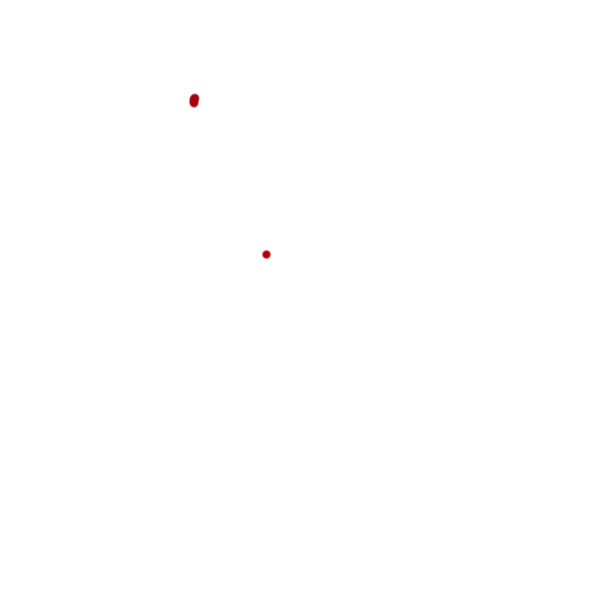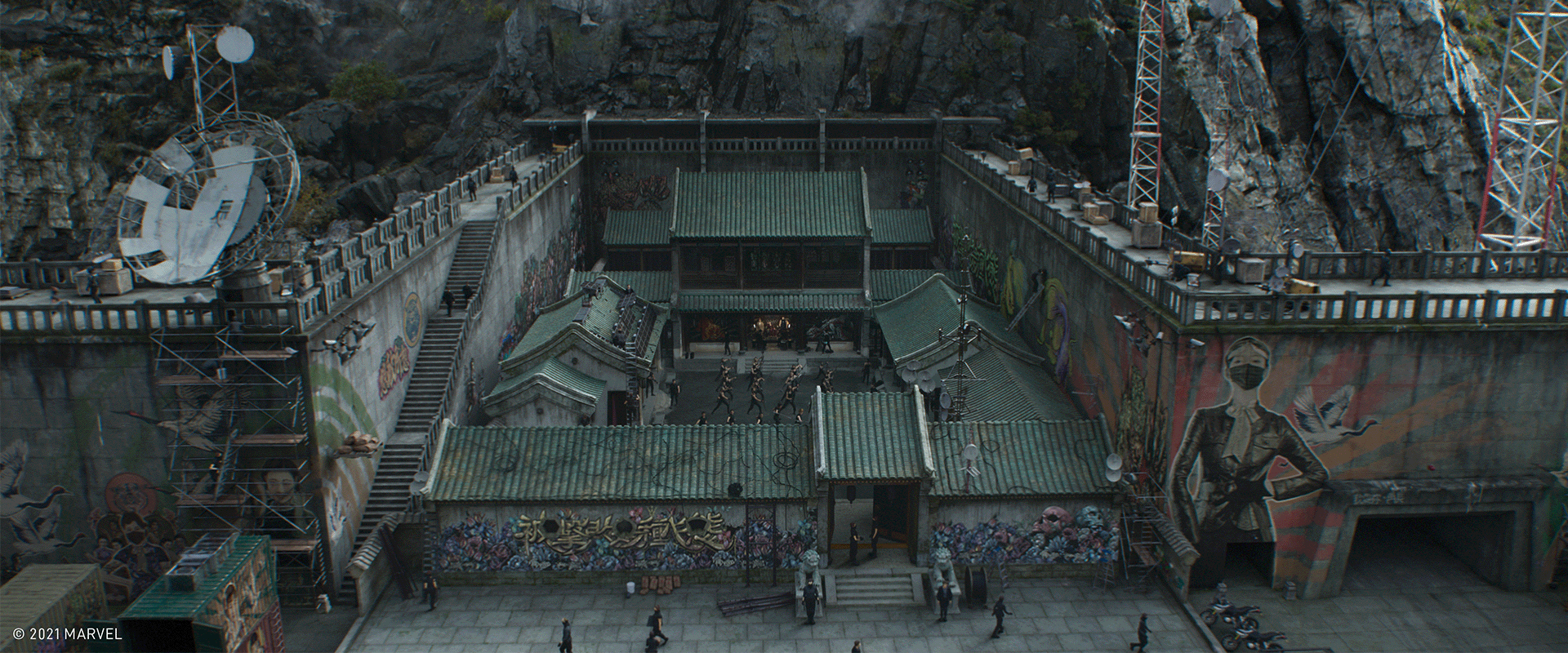Comment Digital Domain a créé une forteresse définie par le chagrin d’amour pour « Shang-Chi et la légende des dix anneaux »
Septembre 17, 2021Près de 250 plans réalisés, dont des Digidoubles, des voitures CG et une évasion inoubliableLOS ANGELES - 17 septembre 2021 - Dans le dernier long métrage de Marvel Studios, Shang-Chi et la légende des dix anneaux, l’antagoniste du film, Wenwu (Tony Leung), est différent de la plupart des méchants vus dans le Marvel Cinematic Universe (MCU).
L’ancien personnage opère à partir d’une forteresse isolée qui existe depuis des siècles et, au fil des ans, a grandi et changé, reflétant ses amours et ses pertes.
Il s’agit d’une structure fluide et en constante évolution, créée et éditée par Digital Domain, collaborateur de longue date de Marvel Studios, le studio d’effets visuels Digital Domain, lauréat d’un Oscar.
« Lorsque nous avons entendu parler pour la première fois du plan de Marvel Studios de créer un film comme Shang-Chi avec un nouveau type de héros, nous savions que ce serait quelque chose de spécial et nous étions ravis d’en faire partie », a déclaré Hanzhi Tang, superviseur des effets visuels du domaine numérique.
« C’est incroyablement gratifiant d’entendre la réaction des critiques et des fans, et nous sommes fiers d’avoir joué un rôle. » Une forteresse pas comme les autres Digital Domain a été approché au début de la production de Shang-Chi et a été invité à aider le public à découvrir l’un des lieux les plus importants du film, le complexe de Wenwu.
La séquence suit un hélicoptère au-dessus d’une nature sauvage isolée et inhabitée, inaccessible à tous, sauf aux plus déterminés.
Mais plutôt que de monter une expédition difficile et coûteuse pour filmer sur place, les cinéastes ont demandé à Digital Domain de créer toute la scène d’ouverture numériquement, du sol au ciel, avec la forteresse elle-même.
En collaboration avec le département artistique de Marvel Studios, Digital Domain a commencé à construire le paysage à l’aide de données d’enquête sur une zone inhabitée de la Nouvelle-Zélande.
En collaboration avec les cinéastes, les artistes ont créé plusieurs itérations du paysage CG en utilisant Maya et Houdini.
Les artistes ont expérimenté l’aspect précis de la roche et de la végétation, créant finalement une forêt complète.
Ils ont ensuite ajouté des effets environnementaux tels que la brume et le ciel nuageux, en utilisant Redshift et le rendu GPU pour gérer le grand nombre de détails et permettre des itérations plus rapides.
Digital Domain a ensuite ajouté un hélicoptère qui est devenu le point central de la scène, ainsi que l’impression de mouvement dans le paysage.
Pour créer le complexe lui-même, Digital Domain a utilisé une combinaison d’images de synthèse et de séquences en direct sur des plateaux physiques.
Après un aperçu introductif depuis les airs entièrement créé à l’aide d’images de synthèse, le lieu comprend une série de plans sur plaques et d’action en direct.
Les artistes ont d’abord reçu des scans LiDAR de la cour, qui comprenaient des écrans bleus au-dessus du plateau.
L’action en direct se concentrant sur la cour, les artistes ont ensuite ajouté le reste du complexe, créant un look qui reflétait l’expansion du lieu au fil des siècles.
Avec le décor planté en 1996, les artistes ont également ajouté de la technologie et de l’équipement adaptés à cette époque.
Après un saut dans l’époque moderne, le film retourne dans la propriété de Wenwu pour la trouver considérablement modifiée, reflétant le chagrin et la colère du personnage.
En utilisant le modèle original, les artistes de Digital Domain ont mis à jour l’apparence, lui donnant une sensation militariste et inquiétante.
Le complexe est devenu plus une forteresse qu’une maison, avec de nouvelles défenses et de nouvelles armes ajoutées numériquement, et des composants datés reflétant les années 90 supprimés. Le film retourne ensuite dans l’enceinte une fois de plus pour le plan final, avec des artistes mettant à jour le lieu une fois de plus pour refléter le changement de circonstances et le modernisant pour une nouvelle ère, avec des œuvres d’art modernes, des tours de télécommunications et la suppression de nombreuses caractéristiques plus agressives précédemment ajoutées. S’échapper de l’enceinte Le Domaine Numérique a également contribué à la création de Shang-Chi (Simu Liu) et de l’évasion de ses alliés.
Après avoir été forcé de retourner dans son ancienne maison, Shang-Chi mène un groupe vers une immense zone de rassemblement, remplie de dizaines de véhicules.
Après avoir choisi une BMW X3 dans laquelle s’échapper, le plaisir commence.
La séquence de l’évasion du composé est un mélange d’effets pratiques et numériques, à commencer par la BMW elle-même.
Pour capturer les performances des personnages de la BMW, le toit du SUV a été retiré, puis remplacé plus tard par les artistes de Digital Domain.
La BMW elle-même a également été recréée numériquement – avec une paire de motos et un véhicule blindé de transport de troupes (APC) – à l’aide de scans LiDAR envoyés aux artistes depuis le plateau et de fichiers CAO des fabricants.
Digital Domain a également ajouté des touches supplémentaires à la structure, notamment des fenêtres avec des salles de serveurs au loin et une source d’alimentation au loin.
Au cours de la violente poursuite, les cascadeurs conduisant une paire de motos ont été remplacés par des remplacements humains numériques et des modèles CG des véhicules.
Les cinéastes ont ensuite pu montrer les cavaliers rencontrant un destin de grizzli qui serait autrement trop dangereux pour être joué à l’aide d’effets pratiques.
La poursuite se termine ensuite par la BMW qui s’échappe de justesse, tandis que l’APC s’écrase contre une porte en béton.
Pour cela, les cinéastes ont utilisé un vrai véhicule et l’ont enregistré lors d’un accident à grande vitesse, avec Digital Domain ajoutant des fioritures numériques.
Au total, Digital Domain a créé près de 250 plans pour le film.
En plus de l’extérieur et de l’évasion de la forteresse, le studio VFX a également aidé à remplacer les dix anneaux dans plusieurs scènes pour leur donner un aspect plus fluide, a ajouté plusieurs remplacements de costumes tout au long du film et a également remplacé la main de l’acteur de Razor Fist Florian Munteanu par une attelle métallique pour ses scènes de non-combat.
« Travailler avec Marvel Studios nous a permis d’exercer nos muscles créatifs d’une manière que nous n’aurions jamais cru possible, et chaque nouveau projet nous permet d’essayer quelque chose de nouveau pour le grand et le petit écran », a déclaré John Fragomeni, président mondial des effets visuels chez Digital Domain.
« Alors qu’ils continuent de repousser les limites de la narration visuelle, cela nous a aidés à essayer de nouvelles techniques et à développer de nouvelles technologies qui ont profité à tout, de nos épisodes à nos publicités en passant par nos humains numériques et plus encore. » Shang-Chi et la légende des dix anneaux est la dernière collaboration d’un partenariat entre Marvel Studios et Digital Domain qui remonte à plus d’une décennie.
Le prochain travail du studio sur le MCU sera vu dans Spider-Man : No Way Home et Doctor Strange in the Multiverse of Madness. Shang-Chi et la légende des dix anneaux est actuellement à l’affiche en exclusivité. À propos de Digital Domain Digital Domain crée des expériences qui définissent le genre et qui divertissent, informent et inspirent.
Au cours du dernier quart de siècle, le studio s’est imposé comme un chef de file dans l’industrie des effets visuels cinématographiques, s’étendant pour englober les épisodes, la prévisualisation, les publicités, les cinématiques de jeux et l’expérientiel, tout en faisant progresser la technologie dans la production virtuelle. Digital Domain est également devenu un pionnier des humains numériques et de la réalité virtuelle, s’ajoutant à un riche héritage composé de centaines de longs métrages à succès pour tous les grands studios, de milliers de publicités, de clips musicaux, de cinématiques de jeux et de contenu numérique de réalisateurs et de marques de renommée mondiale. Une force créative dans les effets visuels et le contenu premium, Digital Domain a apporté son art et sa technologie à des films tels que Titanic, L’étrange histoire de Benjamin Button et les blockbusters Ready Player One, Avengers : Infinity War et Avengers : Endgame. Les artistes du personnel ont remporté plus de 100 prix majeurs, dont les Academy Awards®, les Clios, les BAFTA Awards, les Cannes Lions et les VES Awards. Digital Domain est devenu avec succès le premier studio indépendant d'effets visuels à entrer dans la Grande Chine. En 2018, Digital Domain a acquis l'un des pionniers et leaders chinois de l'équipement matériel de réalité virtuelle - VR Technology Holdings Ltd, Shenzhen (« 3Glasses »). Digital Domain possède des bureaux à Los Angeles, Vancouver, Montréal, Pékin, Shanghai, Shenzhen, Hong Kong, Taipei et Hyderabad. Digital Domain Holdings Limited est cotée à la Bourse de Hong Kong (code boursier : 547). Domaine numérique : www.digitaldomain.com


